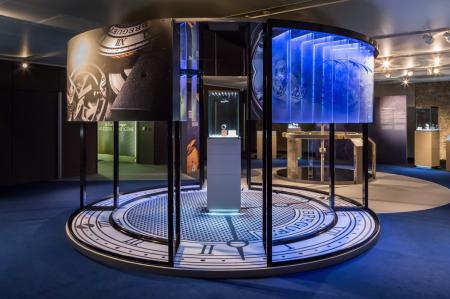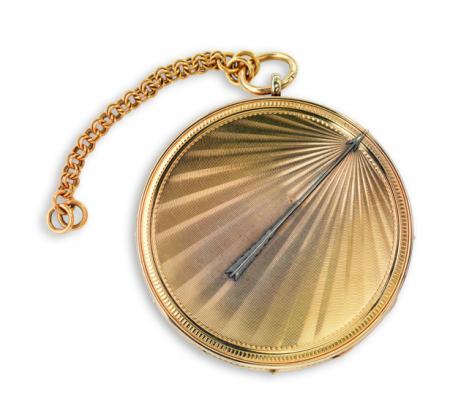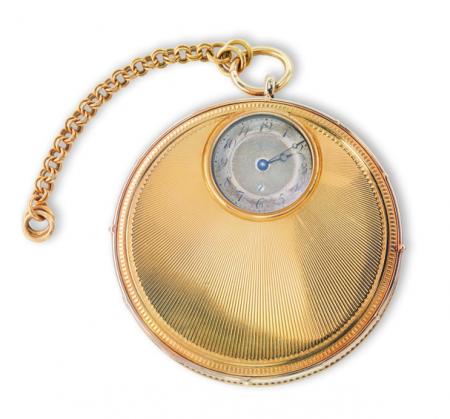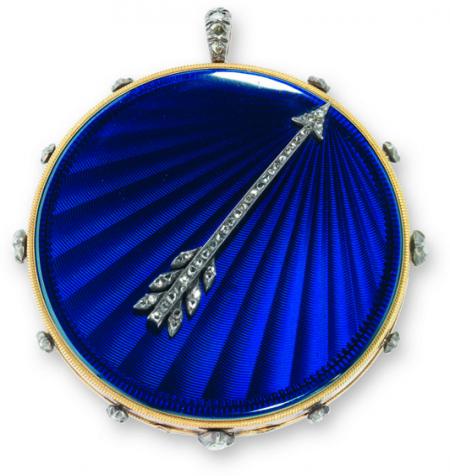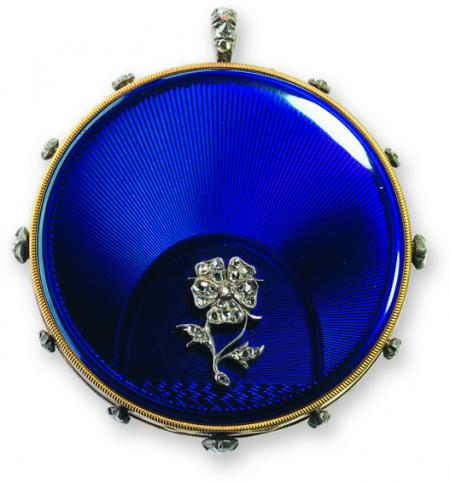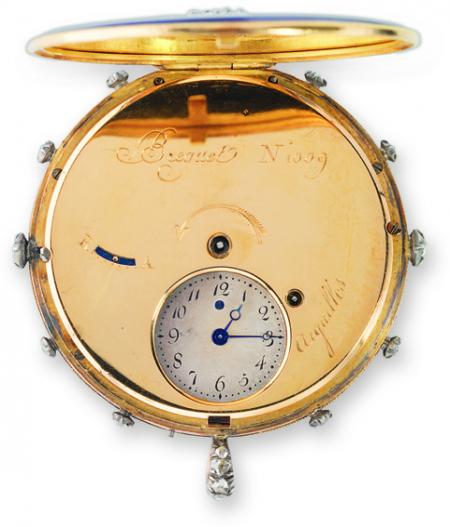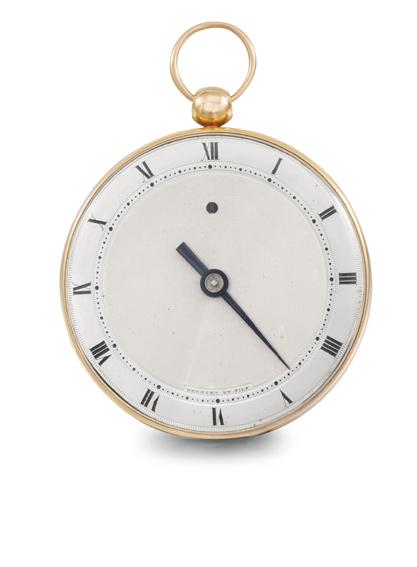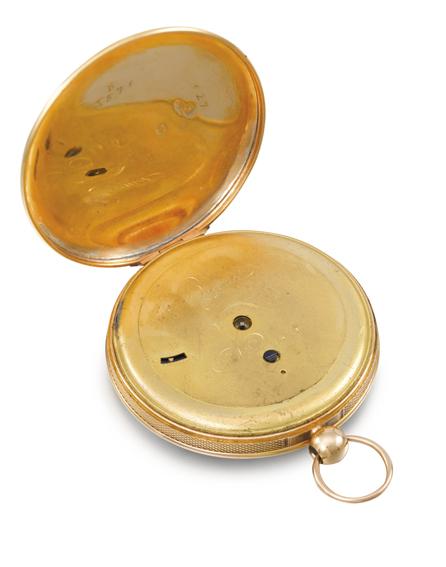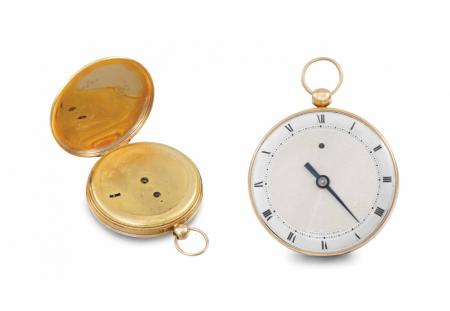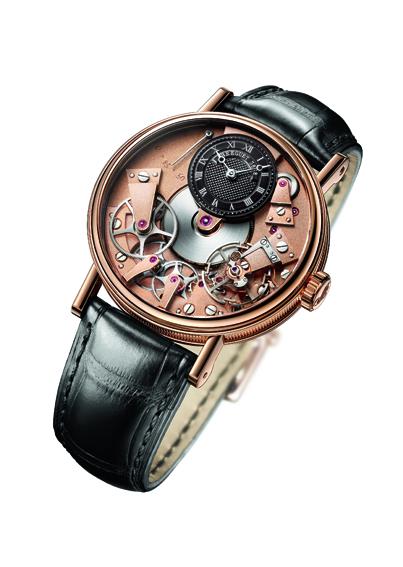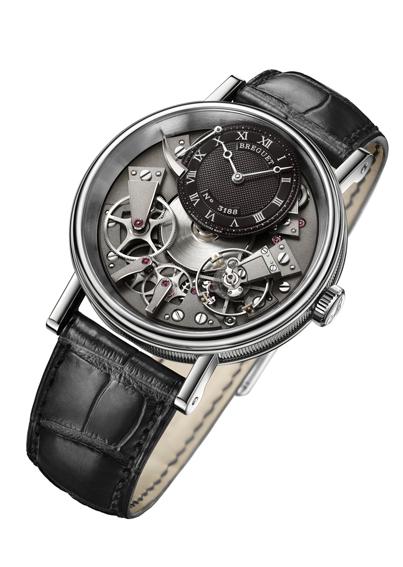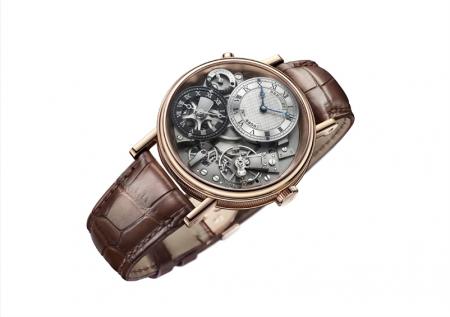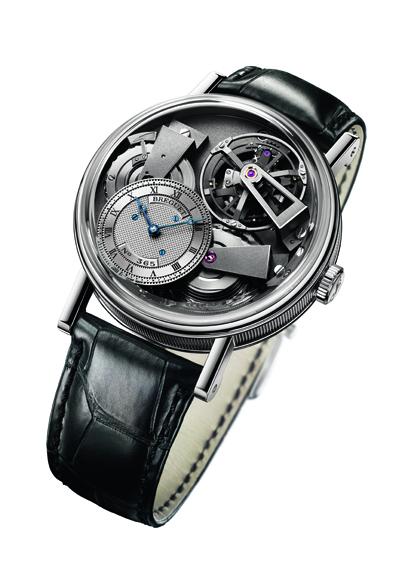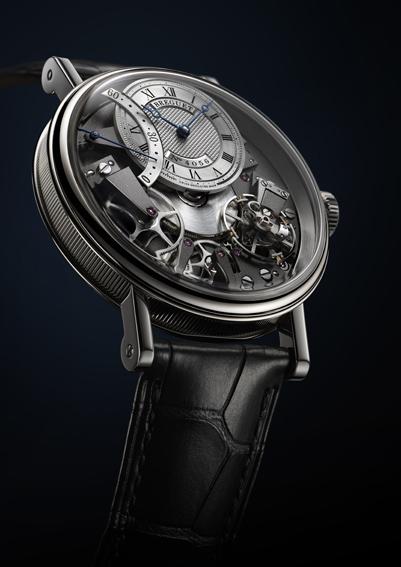La Tradition Breguet, at the heart of an icon
The Tradition collection by Breguet was introduced in 2005. At the time of its launch, the 7027 model was the first contemporary timepiece to reveal the movement organs above the mainplate. This extraordinary architecture affording the opportunity of admiring the main movement components soon established the Tradition as an absolute icon. Above and beyond this unusual characteristic, Tradition watches feature a powerful graphic identity thanks to a clever symmetrical layout of the movement components. Most models comprise a barrel in the centre, a dial at 12 o’clock with hands directly driven by the barrel, a balance wheel and intermediate wheels forming an arc stretching from 4 to 8 o’clock. The protective pare-chute shock-absorbing system invented by Abraham-Louis Breguet appearing on many Tradition creations renders them instantly recognisable and firmly anchors the collection within the history that inspired it.
In 1796, Abraham-Louis Breguet finalised a new model: the “subscription” watch. Endowed with a relatively large diameter, a single hand and an enamel dial, it was powered by an extremely simple special movement that could be produced in large quantities. In the first chapter of his treatise on horology, that he began writing around a decade before his death, A.-L. Breguet described the “subscription” watch in these terms, that are clearly echoed in the Tradition line: “The arrangement of the movement is such that a devotee of mechanics can follow all its effects through the open side (…).” Its commercialisation was to be based on the subscription principle, as explained by the watchmaker in an advertising pamphlet he had printed in 1797: “The price of the watches will be 600 pounds: one-quarter of this sum will be paid by subscribing (…).” The money thus raised would serve to purchase the necessary supplies for what one might well term series production. The reliable and affordably priced “subscription” watch was a great success and attracted a new clientele. Around 700 were produced, with gold or silver cases. A.-L. Breguet used the calibre of the “subscription” watches to make his first tact watches three years later.
Distinguished by an arrow on the outside of the case that reproduces the position of the hours hand and by 12 raised markers placed around the case, tact watches offer the possibility of reading time by touch. Time is conventionally read off on a traditional dial bearing two hands. These smaller and in some instances offset dials are picked up on the contemporary Tradition models which testify to an exceptional capacity for innovation.
Over the years, the Tradition line has been progressively enriched with complications such as a power-reserve indicator, tourbillon, fusée and chain transmission, GMT function and retrograde small seconds, alongside the use of ultra-modern materials such as silicon and titanium.
From the historical N°960, 1009 and 1576 watches to the latest Breguet creation unveiled in an entirely original manner as a prelude to Baselworld 2015, the exhibition “La Tradition Breguet, at the heart of an icon” retraces the birth of a legendary collection born from the subtle merging of two exceptional eras in the development of the watchmaking art.




